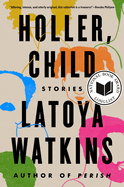
| Publisher: | Tiny Reparations | |
| Genre: | Short Stories (single author), General, Southern, African American & Black, Fiction | |
| ISBN: | 9780593185940 | |
| Pub Date: | August 2023 | |
| Price: | $28 |
| Starred | Fiction |
by LaToya Watkins
The characters in LaToya Watkins's luminous 11-story collection, Holler, Child, could easily be acquaintances of the extended Texas family who haunted her debut novel, Perish. The women here--because, again, they claim the spotlight--could be victims, but most will grab their agency, most memorably and disturbingly in protecting precious children. The titular "Holler, Child" has arguably the most onerous situation, in which a mother must decide her teenage son's fate after he whispers "She didn't say yes.... But I swear she wanted me, Momma." The confrontation reveals flashbacks to her son's brutal conception in her own teen past. In "The Mother," a woman faces media inquests about "how [her son] come to call hisself the Messiah," despite being convicted for "some kind of rape or something" of "that little girl." Will she confirm the impossible? Women with deceiving partners loom. Those who chose undeserving men against their own mothers' warnings include a young widow in "Tipping" and a once-privileged woman in "Everything's Fine." Only tragedy can untangle a teen from her baby's callous father in "Paternal." A woman reevaluates her empty-nester life in the middle of the night in "Sweat" and wakes her lying husband with a pointed gun.
Watkins's writing tends toward unembellished, but that simplicity belies profound insights: "I quit peeling parts of myself off after I realized I was the only one doing the peeling"; "I'm used to being sorry"; "His fear in that moment gave her the first delight she'd felt in a long while." Despite betrayal, violence, and loss, the decision to survive--sometimes, with a hope to someday thrive--thrums loudly throughout this profound collection. --Terry Hong, Book Dragon

| Publisher: | Level 4 Press | |
| Genre: | Romantic Comedy, Humorous, Black Humor, Mystery & Detective, Crime, International Crime & Mystery, Romance, Fiction | |
| ISBN: | 9781646307685 | |
| Pub Date: | August 2023 | |
| Price: | $18.95 |
| Starred | Fiction |
by Addison J. Chapple, Danny Kravitz, Eliza Marsh
An epic con goes sideways in the most hilarious of ways in Con Crazy, a heist novel for the ages by Addison J. Chapple (Santa Ana), Danny Kravitz, and Eliza Marsh. Prewitt Patry is a con artist with a conscience: "If you deserve it, you get taken. If not, you don't. Life and karma are identical twins separated at the big bang. Bonded." In addition to a bad case of sciatica and a strong sense of morals, he's also burdened with a voicemail inbox full of disappointed messages from his ex-wife; a stack of debts owed to some shady characters; and a determination to help his teenage son pay tuition at Harvard, despite he himself feeling like he's "worth about ten bucks." Prewitt thinks maybe his luck has finally turned when he's clued into a job in France, one peppered in the scent of old money.
Prewitt sets off to assemble the best team of grifters he can find, winding up with a group of "nutty outcasts... colorful, con crazy weirdos." What follows is a delightful, roundabout plot that rivals the intricacies of Ocean's Eleven and the absurdities of Clue. Prewitt and his team impersonate security officers from the Vatican, feign a centuries-old plot by the Knights Templar, bring in someone's nephew's pet corgis to play highly trained guard dogs, and find themselves caught in unexpected script snippets from old Hollywood movies. Inevitably, things get messy--including questioning how deserving of a take their mark really is--as Con Crazy reveals its true heart. Readers will delight in following this odd crew as they find romance, friendship, questionable takes, and perhaps even a bit of vengeance in a wild romp of a con gone wrong. --Kerry McHugh, freelance reviewer
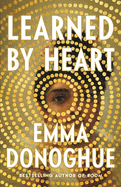
| Publisher: | Little, Brown | |
| Genre: | Friendship, Historical - Victorian, LGBTQ+ - Lesbian, General, Romance, Literary, Lesbian, Fiction, Historical, LGBTQ+ | |
| ISBN: | 9780316564434 | |
| Pub Date: | August 2023 | |
| Price: | $28 |
| Fiction |
by Emma Donoghue
Although Irish Canadian author Emma Donoghue (Haven; The Wonder; Frog Music) tends to bounce between the past and contemporary settings, she has a winning streak of historical fiction. In Learned by Heart, her immersive, sprightly, and sensual novel about the risks of forming bonds across societal divides, she takes inspiration from the true story of how diarist Anne Lister (the subject of the HBO series Gentleman Jack) met her first love, Eliza Raine. Lister and Raine, as they refer to each other, are 14-year-old roommates at a boarding school in York, England, in 1805. They may seem like opposites--Raine, a timid biracial girl with a sizable inheritance; Lister, a boisterous trouble-maker whose parents can barely afford tuition--but "[k]indred sympathy grows between them like a flowering weed" nonetheless. Soon, they are best friends and then lovers. They even secretly exchange vows in a church, Raine thereafter calling Lister "husband." But as letters dated 1815--interspersed throughout the story--from a heartbroken Raine testify, mental illness and other partners intrude. This idyllic relationship wasn't to last.
Lively present-tense narration and copious period detail (the Napoleonic Wars, newspaper rental, smallpox vaccinations, a magic-lantern show, faux side curls attached to a headband) make this feel authentic yet evergreen. Raine's perspective gives readers a winsome sideways look at Lister, who is forever earning "disputatiousness marks," and exhibiting unladylike behavior. "Perhaps I'm the connecting link between the sexes," she muses. The characters' delight in language makes for playful prose full of euphemisms, Latin phrases, and French proverbs. And in the center of it all is a tender record of groundbreaking young passion. --Rebecca Foster, freelance reviewer, proofreader and blogger at Bookish Beck
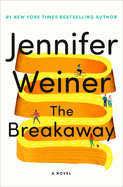
| Publisher: | Atria | |
| Genre: | Women, Family Life, General, Literary, Fiction | |
| ISBN: | 9781668033425 | |
| Pub Date: | August 2023 | |
| Price: | $28.99 |
| Fiction |
by Jennifer Weiner
The Breakaway features the sure-footed storytelling readers have come to expect from bestselling author Jennifer Weiner (The Summer Place; That Summer; Mrs. Everything). The story takes readers through the journey, mostly on a bicycle, of 33-year-old ("almost 34") Abby Stern. Abby's mother and society in general have instilled in her feelings of inadequacy about her plus-size body. Nonetheless, Abby has the perfect boyfriend in Mark. He has loved her since they met at weight-loss camp as teenagers. Abby's life path seems to be laid out in front of her: they will move in together and, Abby assumes, Mark eventually will propose.
But she has flashes of a sense that the perfect life of a doctor's wife might not be for her, so she hesitates. Building on her biking prowess, she decides to lead a cycling tour. But there are two unexpected participants: a former one-night stand named Sebastian, who seemed out of her perceived league, and her mother, Eileen. Both seem determined to forge a closer relationship with Abby. To complicate matters, Sebastian becomes the subject of a viral TikTok video on the second day of the trip. The video--a group of friends realize that each has slept with him--highlights his promiscuity. Abby feels unsettled about both her mother's presence and Sebastian's new infamy. Abby will ride into the sunset, but whether it's with Mark (who doesn't ride at all), Eileen, Sebastian, or by herself is the choice she will make, using all her characteristic wit and intelligence. --Elizabeth DeNoma, executive editor, DeNoma Literary Services, Seattle, Wash.
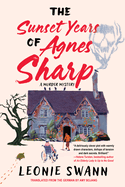
| Publisher: | Soho Crime | |
| Genre: | Humorous, Black Humor, Mystery & Detective, Fiction, Women Sleuths | |
| ISBN: | 9781641294331 | |
| Pub Date: | August 2023 | |
| Price: | $27.95 |
| Mystery & Thriller |
by Leonie Swann, trans. by Amy Bojang
In The Sunset Years of Agnes Sharp, a smart, clever cozy mystery by Leonie Swann and translated from the German by Amy Bojang, a band of lovable geriatrics who share a house in the quiet English countryside find themselves swept up in an escalating murder investigation. The story is set at Sunset Hall, a dilapidated house in Duck End that belongs to Agnes Sharp, retired from the police force. Agnes now shares her domicile with five other eccentric pensioners--three women and two men. The housemates long to stay independent and live on their own while battling memory lapses, hearing and vision loss, as well as bad backs, hips, and more. However, when a resident is found dead in the garden shed and a gun goes missing, their world turns upside down. Before the seniors can retrieve what they believe is the murder weapon, another aged woman is slain nearby. Are the two deaths connected? This launches the housemates--and their pet tortoise--on a conniving, often madcap quest to find the killer while pitted against a host of obstacles, including their own limitations.
Swann's perceptive storytelling resides amidst the offbeat--as evidenced in Three Bags Full, her other cozy, in which a flock of ingenious sheep solves the murder of their shepherd. In The Sunset Years of Agnes Sharp, Swann once again perfectly balances playfulness and poignancy. She exposes and celebrates the elderly and infirm--their predicaments and secrets--delivering a refreshingly fun crowd-pleaser, sure to charm mystery readers of all ages. --Kathleen Gerard, blogger at Reading Between the Lines
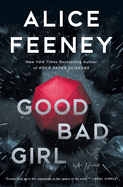
| Publisher: | Flatiron | |
| Genre: | Suspense, Thrillers, Fiction | |
| ISBN: | 9781250843968 | |
| Pub Date: | August 2023 | |
| Price: | $28.99 |
| Mystery & Thriller |
by Alice Feeney
The fractious relationships between mothers and children allow Alice Feeney (Daisy Darker; Rock, Paper, Scissors; Sometimes I Lie) to explore how good people sometimes do bad things--and vice versa--in Good Bad Girl, her sixth gripping psychological thriller. The novel's strong beginning follows an unnamed new mother pushing a carriage with her six-month-old daughter, whom she resents: "I sometimes wish she hadn't been." Within minutes after entering a store, the baby is kidnapped, her disappearance never solved. This scenario forms the heart of a sophisticated plot that follows five characters. Prison librarian Frankie tries to find her teenage runaway daughter; therapist Clio is nearly broke; and 18-year-old Patience works as an attendant at a barely adequate London senior-care facility, where she befriends 80-year-old Edith, who was tricked by her daughter into being admitted and signing away her home. Arrogant gallery manager Jude is the lone man. Edith's and Patience's ages make each vulnerable: people often underestimate them. But Edith's background as an investigator--granted, a "mere store detective"--honed her observation skills, leading her to believe a resident was killed. This is reinforced when another murder occurs. "I learned how to watch people and see who they really are beneath the disguises we all wear," Edith says.
Feeney carefully doles out the connections, deepening the understanding of how the characters' pasts have shaped their present actions, including how that missing baby affected each. Alternating points of view allow Feeney to showcase each character's emotional well-being, while complicated bonds elevate the intricate plot. --Oline H. Cogdill, freelance reviewer
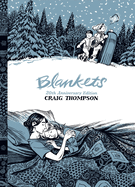
| Publisher: | Drawn & Quarterly | |
| Genre: | Literary, Comics & Graphic Novels | |
| ISBN: | 9781770466883 | |
| Pub Date: | August 2023 | |
| Price: | $39.95 |
| Graphic Books |
by Craig Thompson
When Craig Thompson (Habibi) first published his autobiographical Blankets in 2003, few anticipated the tremendous boom in the graphic format or the ways comics would transcend the superhero genre so strongly associated with it. But Thompson knew the storytelling power of comics, and now--with the 20th-anniversary reissue of Blankets--a new generation can rediscover one of the books that helped launch the graphic revolution. The anniversary edition features new cover art and an afterword by the author with behind-the-scenes sketches and plenty of "making of" material, but the tender and beautifully drawn coming-of-age narrative remains the same. In the afterword, Thompson explains his process of moving the comics format into this personal space: "In contrast to the explosive fantasies comic books were known for, I wished to craft a spacious book that was quiet, intimate, even mundane." Blankets describes Thompson's upbringing in a fundamentalist Christian home and details his first experience with falling in love as well as his later experience with falling out of the faith.
Blankets, tenderly written and drawn with a naked vulnerability, captures the essence of being young, when everything feels urgent, and every heartache and hope consumes like fire. Though some of the language may feel dated, the universal story of love and loss is still likely to charm. Whether revisiting a favorite classic or discovering the narrative for the very first time, readers will fall in love with Blankets. --Sara Beth West, freelance reviewer and librarian

| Publisher: | Abrams | |
| Genre: | Biography & Memoir, Literary Criticism, Nonfiction, Literary, Comics & Graphic Novels | |
| ISBN: | 9781419745904 | |
| Pub Date: | August 2023 | |
| Price: | $24.99 |
| Starred | Graphic Books |
by Bill Griffith
There may be no better exhibit A in walking the line between high- and lowbrow art than the comic strip Nancy. With Three Rocks: The Story of Ernie Bushmiller: The Man Who Created 'Nancy', Bill Griffith--of Zippy the Pinhead fame--presents a biography in the form of a graphic novel that's as approachable, enticing, and weird as the Nancy cartoonist's own work is. Bushmiller (1905-1982), a working-class guy from the Bronx, dropped out of school at 14 and became a copyboy at the New York World. He went from doing illustrations for the Sunday World magazine to crafting his own comic in 1922, honing his skills until 1925, when he took over the strip Fritzi Ritz; it was later renamed Nancy to reflect the character's popularity. Introduced in 1933, Fritzi's spunky eight-year-old niece navigated the world with her sketchy-looking young friend, Sluggo. Griffith notes that "the strip survives to this day, Bushmiller-less."
Although Bushmiller drew with the cleanest of lines and set Nancy in an anodyne-looking suburb, he applies surreal touches that forbade complacent reading and courted an adult audience. In one of Bushmiller's comics reproduced here, Sluggo gives Nancy a "push" in her toy car by tilting down the cartoon panel she's occupying. Also included is a comic in which Nancy and Zippy the Pinhead discuss catchphrases. Of course, that strip was drawn by Griffith (Nobody's Fool: The Life and Times of Schlitzie the Pinhead), who injects Three Rocks with layers of meta that verge on the countless. --Nell Beram, author and freelance writer

| Publisher: | Top Shelf Productions | |
| Genre: | Biography & Memoir, Form, Nonfiction, Comic Strips & Cartoons, Literary, Comics & Graphic Novels, Humor | |
| ISBN: | 9781603095266 | |
| Pub Date: | August 2023 | |
| Price: | $39.99 |
| Graphic Books |
by Luca Debus, Francesco Matteuzzi
In Funny Things: A Comic Strip Biography of Charles M. Schulz by Luca Debus and Francesco Matteuzzi, the former shows himself to be an uncanny visual mimic. A few Schulzian loops capture wavy hair, and an illustration of young Schulz in a school classroom could be straight out of Peanuts: the boy is sitting at a right-facing desk and looking anxious. Readers of the heart-melting but sobering Funny Things will come to understand that the real Schulz often was the same.
Funny Things largely consists of three- and four-panel black-and-white comic strips that track the life of Schulz (1922-2000) from his beginnings as a sensitive kid raised in Minnesota by his barber father and advice-dispensing mother. Every few pages, these strips are interrupted by longer, Sunday-comics-style color strips featuring "Good ol' Sparky"--usually an elder version of Schulz, who expands on his life story, frequently breaking the fourth wall to do so.
Debus and Matteuzzi succeed valiantly at matching Schulz's sensibility. At critics' accusations that Schulz's strip doesn't keep up with the times, the authors have the aging cartoonist remark, "Presidents come and go... Anxiety is here to stay!"--something one can picture Charlie Brown quipping. (Then again, those may be Schulz's own words: an authors' note explains that while most of the book's dialogue is imagined, some lines are direct quotes.) A wordless and shattering 11-panel color strip in which an ailing Schulz realizes he can no longer draw attests that some of the most powerful moments in Funny Things aren't funny at all. --Nell Beram, author and freelance writer

| Publisher: | Pegasus | |
| Genre: | Biography & Autobiography, Literary Figures, Political, Historical | |
| ISBN: | 9781639364459 | |
| Pub Date: | August 2023 | |
| Price: | $29.95 |
| Biography & Memoir |
by Thomas Harding
Thomas Harding's The Maverick: George Weidenfeld and the Golden Age of Publishing, the utterly absorbing biography of publishing legend (Arthur) George Weidenfeld, is a treasure trove of publishing history from both sides of the Atlantic. Weidenfeld was an unlikely tastemaker, arriving in the U.K. as a Jewish refugee from Austria fleeing the Nazis after the Anschluss. Through connections and with conviction and courage, he managed to start his own publishing house, Weidenfeld & Nicolson, and positioned himself at the very heart of the publishing revolution of the 20th century, in part by taking on the U.K.'s indecency laws with works such as the iconic Lolita by Vladimir Nabokov, The Group by Mary McCarthy, and books by Isaiah Berlin, Joan Didion, J.D. Salinger, and Henry Kissinger. Chapters bear the titles of works Weidenfeld published or--in the case of Mick Jagger--failed to publish, with Harding providing the full scope of the political and social context of the time.
Harding (The House by the Lake; Hanns and Rudolf) deftly complements the well-known stories of these prominent authors and their works with colorful behind-the-scenes testimonials and insights into the strategic and tactical aspects of the publishing world. He also shares a frank and intimate look at Weidenfeld's personal life, including his several marriages and his ascent into the loftiest realms of both London and New York society. No less captivating were his friendships, including a lifelong relationship with one-time United Nations Secretary-General Kurt Waldheim. Harding's book is a frank and entertaining portrait of a tireless and enterprising publishing maverick whose influence changed what and how we read. --Elizabeth DeNoma, executive editor, DeNoma Literary Services, Seattle, Wash.
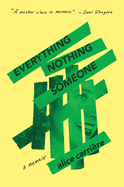
| Publisher: | Spiegel & Grau | |
| Genre: | Biography & Autobiography, Women, Self-Help, Personal Memoirs, Depression, Artists, Architects, Photographers, Mood Disorders | |
| ISBN: | 9781954118294 | |
| Pub Date: | August 2023 | |
| Price: | $28 |
| Biography & Memoir |
by Alice Carrière
These two would not even make the short list in a hypothetical Guinness Book of Halfway Decent Parents: American painter Jennifer Bartlett (1941-2022) and German actor Mathieu Carrière (1950-). Their daughter, Alice Carrière, has written an arresting memoir in large part about the deleterious effects of their parenting, but Everything/Nothing/Someone is also about the more universal trial of searching for one's identity while living in the shadows of larger-than-life figures. The book begins with Carrière's Greenwich Village childhood, during which her mother parented from a distance that she filled with her staff. (No starving artist was Bartlett, whose outsize wall piece Rhapsody made her art-world successful in 1976.) Conversely, Carrière's father didn't parent from a remove, but that was the problem. His emotional intimacy verged on the sexual, producing all the expected psychological confusion: the author writes that her father "made me feel seen and wanted in a way my mother didn't." Carrière's parents split up when she was six; she would begin cutting at age seven to manage her anxiety.
A Northern gothic coming-of-age story, Everything/Nothing/Someone chronicles Carrière's mental health problems, which would precipitate multiple hospitalizations and a multitude of meds. The memoir's steady flow of outlandish incidents can sometimes have a static quality, but the writing is so lovely and gingerly that it carries the day. After Carrière makes her peace with her mother toward the end of Bartlett's life, her hand "felt like silverware wrapped in a warm silk napkin, her bones slippery under her thin, hot skin." --Nell Beram, author and freelance writer
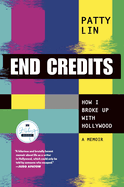
| Publisher: | Zibby Books | |
| Genre: | Biography & Autobiography, Women, Personal Memoirs, Asian & Asian American, Entertainment & Performing Arts, Cultural, Ethnic & Regional | |
| ISBN: | 9798985282887 | |
| Pub Date: | August 2023 | |
| Price: | $27.99 |
| Biography & Memoir |
by Patty Lin
Fans of the now canonized Freaks and Geeks were devastated by its 2000 cancellation, but no doubt Patty Lin was even more upset: she was then a writer for the show--a job she "truly enjoyed"--and it was downhill from there. End Credits: How I Broke Up with Hollywood is Lin's long-form answer, crafted with honesty and panache, to the question of why she "retired" from TV writing at age 38. Lin, the child of Taiwanese immigrants, grew up in the tacky-TV 1970s. After her freshman year at Cornell, she landed a summer internship at Late Night with David Letterman, which eventually led to a job that clinched her dedication to the TV business. Lin moved to Los Angeles, where, following her stint at Freaks and Geeks, she got a job writing for Friends, but her option wasn't picked up. (" 'My option didn't get picked up' was just a euphemism for 'I got fired.' ") Lin's tenure at Desperate Housewives and Breaking Bad ended the same way.
Like Nell Scovell's Just the Funny Parts and Joyce Chopra's Lady Director, End Credits is a kid-gloves-off chronicle of being female (and, in Lin's case, the rare person of color) in a male-dominated entertainment field. Some readers may wonder if the memoir's subtitle should be inverted: maybe Hollywood broke up with her? Either way, the workaholism required to succeed in the industry wasn't for Lin, and she recounts experiences that make one wonder how anyone could be cut out for the TV biz. --Nell Beram, author and freelance writer
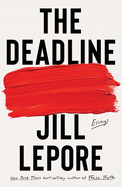
| Publisher: | Liveright | |
| Genre: | Education, United States, General, History, Literary Collections, Essays | |
| ISBN: | 9781631496127 | |
| Pub Date: | August 2023 | |
| Price: | $45 |
| Starred | History |
by Jill Lepore
Those for whom history is an incomprehensible nightmare may find relief reading the works of Jill Lepore (If Then; Joe Gould's Teeth; The Secret History of Wonder Woman), academic historian, Harvard professor, New Yorker writer, and public intellectual. The Deadline compiles an extensive collection of Lepore's writing dedicated to history that is both personal and political--from the grand ballrooms of global affairs and headline events to the peculiar intimacies of quiet lives. As a preeminent scholar and writer who is also a woman and mother, Lepore writes with a distinct perspective and sophistication, with wisdom, and with agony about a profession--and a world--dominated by men. But the collection is far from exclusively devoted to history or the faculty lounge. Rather, Lepore's 46 essays include thoughts on her relationships with her father and mother, the latter's life told in parallel with an account of Jane Franklin, Ben Franklin's sister; literature (Frankenstein as a slave narrative, and the life of Herman Melville); America's history and its present (the life of Eugene Debs, the history of the U.S. Supreme Court, and an account of the torture regime of the Bush administration); and her love of biking.
Her curiosity's intensity is matched only by its scope; the sheer variety of topics will surprise and delight readers who revel in the perhaps dying art of a great generalist. The Deadline superbly chronicles the many crises and joys of our times--and their origins in times long past. --Walker Minot, writer, editor, and reviewer
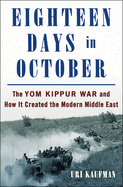
| Publisher: | St. Martin's Press | |
| Genre: | Middle East, General, History, Israel & Palestine, Military | |
| ISBN: | 9781250281883 | |
| Pub Date: | August 2023 | |
| Price: | $32 |
| History |
by Uri Kaufman
Relatively small, short conflicts can be lost too easily to the dustbin of history, given the multitude and magnitude of wars in the 20th century. In Eighteen Days in October, Uri Kaufman, an American real estate developer and scholar, goes far toward ensuring this will not be the case for 1973's Yom Kippur War between Israel and Egypt and Syria. Kaufman's work, written with propulsive narrative flair and a readable style that does not overlook the finer details, is an impressive achievement of independent scholarship, and a vital resource for students and readers curious about the conflict. Primarily but not exclusively focused on Israeli government, military, and society, Kaufman begins with a brief recounting of the conflicts, skirmishes, and ceasefires leading up to the Yom Kippur War. This grounds readers in the key context, concerns, and geographies, while introducing many larger-than-life characters of the time, including Israeli prime minister Golda Meir, Egyptian president Anwar Sadat, and U.S. Secretary of State Henry Kissinger.
But it is in the war narrative that Kaufman truly shines. With copious and detailed citations to other scholarly works, interviews, and archival government files--many of which were only recently declassified--Eighteen Days in October is a fine work of military history. Brought to life are well-known stories, but also intelligence reports, logistical quandaries, fierce backroom deliberations with grand strategizing, and minute tactical pivot points. Kaufman also provides thoughtful reflection on the consequences and the scapegoating, sharing his expert conclusions on a region--and a world--forever changed by the Israeli victory and the country's solidification. --Walker Minot, writer and editor
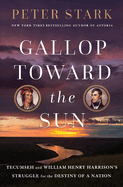
| Publisher: | Random House | |
| Genre: | Biography & Autobiography, Indigenous Peoples in the Americas, United States, 19th Century, History, Military | |
| ISBN: | 9780593133613 | |
| Pub Date: | August 2023 | |
| Price: | $28.99 |
| History |
by Peter Stark
The titanic clash of Shawnee chief Tecumseh and American general and politician William Henry Harrison--and their opposing visions of the future--is the dramatic focus of Peter Stark's Gallop Toward the Sun. Although Harrison is often remembered as the president with the shortest term (one month), Stark (Young Washington) claims that Harrison's true legacy is his earlier political and military career "extinguishing title," as he once put it, to Indigenous lands of the Ohio Valley. Harrison is no mere footnote in Stark's authoritative telling, but rather depicted as an ambitious Virginian who saw himself as a "second-wave Founding Father" who could help "forge an American identity on western lands for the benefit of the small man."
Standing athwart him was Tecumseh, a fierce Shawnee tribal leader gifted with mesmerizing oratorical skill, who sought to stop the white onslaught by establishing a pan-tribal confederacy along the Wabash River. From the battle at the Tippecanoe to the War of 1812 that fatefully tied Tecumseh's confederacy with the British, Stark gets at the animating drives of these two men who "vied to outplay each other on a chessboard that spanned the central swath of North America." He suggests Harrison's hunger for acreage encouraged his "moral sleight of hand" when dispossessing Native people of their lands. For Tecumseh, it was his vision of "unity, strength, and hope" among diffuse Native tribes that would secure their existence. Gallop Toward the Sun is an engaging retelling of a pivotal moment in American history. --Peggy Kurkowski, book reviewer and copywriter in Denver
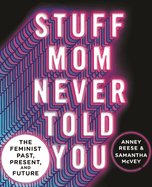
| Publisher: | Flatiron | |
| Genre: | Biography & Autobiography, Women, Feminism & Feminist Theory, Women's Studies, Social Science | |
| ISBN: | 9781250268600 | |
| Pub Date: | August 2023 | |
| Price: | $31.99 |
| Social Science |
by Anney Reese, Samantha McVey
A well-read feminist reviewer of a certain age who encounters Stuff Mom Never Told You may find herself sheepishly wondering: How much can she learn about feminism from a couple of young women? Answer: lots, if those women are Anney Reese and Samantha McVey, cohosts of iHeartMedia's intersectional feminism-minded podcast Stuff Mom Never Told You. Their book of this name is as elucidating as it is galvanizing.
In their authors' note, Reese and McVey say that the decade-old podcast (of which they aren't the original hosts) began "with the goal of examining everything and anything through a feminist lens," and their book shares this mission statement. It's a feminist smorgasbord in six themed chapters: on women in sports, on reproductive rights, and so on. As with any smorgasbord, there's a range of textures and tastes: each chapter features a condensed graphic novel illustrated by Helen Choi that introduces the topic at hand; a fictional cautionary tale that hypothesizes what would have happened if progress (Roe v. Wade, gay marriage) had been thwarted; and straight-up reporting on how progress was made.
The most powerful moments in Stuff Mom Never Told You are found in the book's "journal entry" sections, in which Reese and McVey grapple with their place in the world. (Each author's personal take is distinguished by a thumbnail of her Funko toy-style likeness.) With its breezy tone and Feminism 101-heavy content, the book is a fine entry point for newbie feminists and feminism-curious young adults. For older feminists, the book offers some new info and the reassurance that there are righteous young women out there flying the flag high. --Nell Beram, author and freelance writer
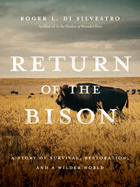
| Publisher: | Mountaineers Books | |
| Genre: | Nature, Life Sciences, Zoology - Mammals, Environmental Conservation & Protection, North American, Science, General, History | |
| ISBN: | 9781680515831 | |
| Pub Date: | August 2023 | |
| Price: | $21.95 |
| Nature & Environment |
by Roger L. Di Silvestro
With Return of the Bison: A Story of Survival, Restoration, and a Wilder World, naturalist Roger L. Di Silvestro (Theodore Roosevelt in the Badlands) chronicles the history of an iconic species. This exhaustively researched text briefly describes the bison's early massive proliferation across the North American continent, humans' heavy pursuit of them, and their near extinction as a result. But it begins in earnest with the earliest conservation efforts, in the 1880s, through the present. Di Silvestro outlines the stories of the American wood bison (western Canada and Alaska) and the European bison, or wisent, but his focus rests chiefly on the American plains bison, which until the late 1800s covered much of North America in the kinds of extraordinary numbers also associated with the now-extinct passenger pigeon. While the bison population has recovered from just a few hundred into the low hundreds of thousands (most of those in commercial herds), its fate is far from secure; in fact, according to some biologists, the bison is already ecologically extinct ("its numbers are so low, so scattered, that it no longer fulfills any ecological role"). The lessons of this story apply to the conservation of other megafauna worldwide, including giraffes, elephants, rhinos, and wildebeest.
Return of the Bison is a thorough, impassioned, expert account of a specific conservation effort over the past 150 years and the questions that will continue to face those who care about wildlife and human impact on the natural world. "The saga of the bison is still an unfurling epic"--and one to watch. --Julia Kastner, librarian and blogger at pagesofjulia

| Publisher: | Hachette Go | |
| Genre: | Developmental, Family & Relationships, Parenting, Education, Psychology, General, Learning Styles, History, Child | |
| ISBN: | 9780306830693 | |
| Pub Date: | August 2023 | |
| Price: | $29 |
| Education |
by Ana Homayoun
Parents, teachers, and students alike have an excellent, highly usable new resource to rely on as they contemplate what skills high school should best impart to its charges. Long focused on grades, test scores, and acceptance into a "good" college or university as markers of success, all parties are often left wondering later why achieving those things doesn't always provide the long-lived outcomes and satisfaction they expected. Erasing the Finish Line by academic advisor and early career development expert Ana Homayoun (That Crumpled Paper Was Due Last Week) provides critical insight into the ways in which planning and coping skills are underemphasized in contemporary education and college prep. In fact, she argues, most of what would fall under the heading of "executive functioning skills" are given short shrift, despite being more predictive of achievement and satisfaction in later life than grades alone.
Homayoun provides valuable demonstration for how developing skills in organization, time management, prioritization, working memory, and adaptability serves as the bedrock for both education and career paths. She gives examples of many students she has known who have managed to develop these skills with lasting results. Alongside this core skill set, the author discusses how essential it is to develop genuine, rather than transactional, connections, alongside self-knowledge, self-acceptance, and self-compassion. None of these tools or approaches, she stresses, comprise a "one-and-done" list for checking off, but rather a long-term process meant to provide a generous, reflective path for people to celebrate and cultivate their unique sets of talents and interests. This is a fascinating read--and wake-up call--that gives everyone invested in students reaching their goals an actionable plan to set them up for success. --Elizabeth DeNoma, executive editor, DeNoma Literary Services, Seattle, Wash.

| Publisher: | Roaring Brook Press | |
| Genre: | Biography & Autobiography, Holocaust, Young Adult Nonfiction, History, Historical | |
| ISBN: | 9781250265722 | |
| Pub Date: | August 2023 | |
| Price: | $19.99 |
| Starred | Children's & Young Adult |
by Steve Sheinkin
Three-time National Book Award finalist and Newbery Honor author Steve Sheinkin (Fallout; Bomb) consistently offers readers exacting nonfiction at a thriller pace. Rudolf (Rudi) Vrba's heroic Auschwitz escape story makes for a natural Sheinkin subject. Sheinkin's meticulous research, memorable subjects, and haunting atmosphere contribute to an exceptional, soul-stirring narrative.
Rudi, a fiercely determined teenager, manages to achieve the seemingly impossible: he escapes Auschwitz. His goal in fleeing the intricately constructed concentration camp, guarded by heavily armed Nazi soldiers and vicious tracking dogs, is not only freedom, but exposure. Rudi wants to reveal the truth about the genocide perpetuated against the Jewish people of Europe. And despite the danger to himself, Rudi knows "the only way to fight big lies... [is] with aggressive doses of the truth." He memorizes details about the camp, its occupants and overseers, and the hell taking place there. Then he carefully plans an escape, learning important lessons from those who tried and failed before him. His doggedness and bravery ultimately save lives.
While the book's title reflects Rudi's storyline, Sheinkin parallels the teen's life with the experience of Rudi's future wife, Gerta Sidonová, as she and her family attempt to hide from the Nazis in Hungary. Both storylines reveal the harrowing ordeals that Europe's Jewish population faced during the Nazi era. Sheinkin's account is transfixing and never compromises the horrifying facts of the Holocaust. Impossible Escape illuminates the life and trials of a young man with whom teen readers can identify, and illustrates the exceptional actions that made Rudi "one of the great heroes of the entire Second World War"--nonfiction at its best. --Jen Forbus, freelancer
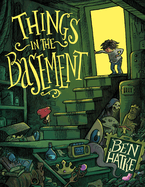
| Publisher: | First Second | |
| Genre: | Paranormal, Juvenile Fiction, Comics & Graphic Novels | |
| ISBN: | 9781250909541 | |
| Pub Date: | August 2023 | |
| Price: | $14.99 |
| Starred | Children's & Young Adult |
by Ben Hatke
Things in the Basement is a gorgeous, maze-like graphic novel for young readers that features big brother Milo on a reluctant subterranean quest to find his baby sister's "special sock."
Milo, his mother, and twins Lucy and Leo have moved into a new house. Milo's overwhelmed mother asks the boy to check the basement for Lucy's missing sock, the one knitted with Tia Maria's "special yarn." The boy, whose floppy bangs hide his eyes, anxiously heads down to the laundry room... where he discovers another room hidden behind the water heater. He spies a rat scampering away with the missing sock and chases it--into another basement. And then another! Here he finds an old-fashioned drawing room, complete with a skull. Though Milo is at first frightened by the skull's "clattr-clack[ing]," "Chuckles" joins the hunt for the elusive "sock rat." Boy and skull encounter an eyeball-squid monster, a ravenous Gobbler, and a ghost who's haunting an enormous sock pile as they try to complete Milo's task.
Ben Hatke's inspired plot is visually driven, creative, and multilayered. Lavish mixed-media illustrations employ sharp angles and a muted palette--often sparked with dramatic bursts of color and light--to create a strong sense of place and mood. Hatke (Mighty Jack) uses borderless, curvy panels and full-bleed spreads with careful intention to depict action and build suspense. The bulk of the story is told through art with dialogue clarifications when needed and sound effects that add to both the fun and the scares. As Milo aptly points out, "this is a really big basement"--it is, and it's home to a really big, imaginative story! --Lynn Becker, reviewer, blogger, and children's book author
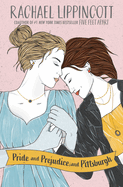
| Publisher: | Simon & Schuster Books for Young Readers | |
| Genre: | Romantic Comedy, Romance, Coming of Age, Young Adult Fiction, LGBTQ+ | |
| ISBN: | 9781665937535 | |
| Pub Date: | August 2023 | |
| Price: | $19.99 |
| Starred | Children's & Young Adult |
by Rachael Lippincott
Outlander meets Bridgerton in this witty, tender LGBTQ+ young adult time travel romantic comedy. Eighteen-year-old artist Audrey Cameron is lost after being dumped by her boyfriend and waitlisted by her dream school, "unable... to draw anything past a stick figure." She is considering giving up on art and love altogether when an eccentric regular at her family's Pittsburgh convenience store offers to help her find inspiration. Audrey accepts. "Everything goes black" and she wakes up on a country estate in 1812 England. The estate is home to Lucy Sinclair, a teenage heiress who dreams of "study[ing] piano at a conservatory," but is being pressured to marry by her domineering father. Audrey becomes convinced that she must find true love to get back to 2023; Lucy agrees to teach Audrey the "etiquette, dancing, [and] manners" that she will need to "win the affections of a suitor." But as Audrey and Lucy grow closer, Audrey begins to worry she is "falling for the one person [she] can't have."
Pride and Prejudice and Pittsburgh is a gleefully anachronistic take on the Regency love story that blends humor and snark with romantic pining and journeys of self-discovery. Author Rachael Lippincott (All This Time, with Mikki Daughtry) emphasizes small moments of intimacy between Audrey and Lucy, like "fingertips brushing lightly together," that convey palpable yearning from both characters' perspectives. Period drama and rom-com enthusiasts alike should enjoy this story of two women from very different times finding love, artistic inspiration, and self-assurance. --Alanna Felton, freelance reviewer
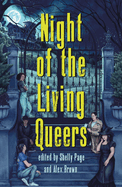
| Publisher: | Wednesday Books | |
| Genre: | Paranormal, Occult & Supernatural, Horror, Short Stories, Collections & Anthologies, Young Adult Fiction, LGBTQ+ | |
| ISBN: | 9781250892966 | |
| Pub Date: | August 2023 | |
| Price: | $12 |
| Starred | Children's & Young Adult |
by Shelly Page , Alex Brown, editors
Shelly Page and Alex Brown make their editorial debut by bringing together an impressive roster of BIPOC queer authors in this gratifyingly frightening and humorous YA story anthology, centering BIPOC queer characters.
The pure enjoyability of Night of the Living Queers: 13 Tales of Terror & Delight lies in its brilliant blend of tenderly serious and lighthearted stories that feature sinister supernatural and undeniably real fears--as well as one misunderstood pizza-stealing specter. Each story takes place on Halloween, spectacularly enhanced by a blue moon. Late-night outings and parties abound, every setting visceral: Vanessa Montalban describes an abandoned hotel as "a season away from growing teeth" in "Welcome to the Hotel Paranoia"; a mall food court is known for its spectral resident in "The Three Phases of Ghost-Hunting" by Brown; and a drive-in theater hosts a ghost car from the 1950s in "A Brief Intermission" by Sara Farizan (Tell Me Again How a Crush Should Feel). Ouija boards spit out spirits, ominous noises herald hauntings, and invisible forces impose their will. Comedic moments burst through the scares. "AAAHHHHH!" a character in Ryan Douglass's (The Taking of Jake Livingston) "Knickknack" screams in a dead clown's dark bedroom before deadpanning, "Oh. It's just bowling pins. Not giant dildos."
Here there be vampires that must be invited in, one solid Ghostbusters joke, swoony queer love, and enticingly chilling Halloween fun to revel in while huddled beneath a blanket any time of the year. --Samantha Zaboski, freelance editor and reviewer.
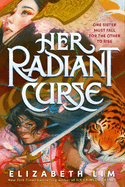
| Publisher: | Knopf Books for Young Readers | |
| Genre: | People & Places, Epic, Asia, Fantasy, General, Young Adult Fiction, Fairy Tales & Folklore | |
| ISBN: | 9780593300992 | |
| Pub Date: | August 2023 | |
| Price: | $19.99 |
| Children's & Young Adult |
by Elizabeth Lim
This action-packed, evocative fantasy is replete with intriguing magic and East Asian folklore.
Nineteen-year-old Channi was only two years old when Angma the Demon Witch cursed her face to have a snake's green-brown scales and thin slit-like mouth. Angma says she'll lift the curse if Channi brings her sister, Vanna--"graced by the gods" with beauty and a heart that radiates gold light--to her before Vanna's 17th birthday; otherwise she will come for them both. Three days before Angma's deadline, Channi's father holds a "selection ceremony" to determine whom Vanna will marry. The final choice is decided by a "contest of warriors," pitting an inexperienced crown prince against an old king's champion--a creature that is half dragon, half man. Channi volunteers to fight the champion to defend Vanna's freedom. Channi defeats the champion but catches the eye of the old king, who takes her prisoner. Now separated from Vanna, Channi will have to rely on unlikely allies to help her find her sister before Angma does.
Her Radiant Curse, a prequel to Elizabeth Lim's Six Crimson Cranes duology, is a high-stakes fantasy with a fully realized world, heart-pounding action, and a hint of forbidden romance. There is cruelty and violence but also sisterhood and love layered into a story bountiful with legends, curses, and prophecies. Lim smartly explores the dark side of beauty, particularly society's inclination to use it as a commodity and measurement of self-worth, while highlighting the importance of self-acceptance. Lim's tantalizing world and empathetic characters come together in this captivating yet heartbreaking story about sisterly love and facing adversity. --Lana Barnes, freelance reviewer and proofreader